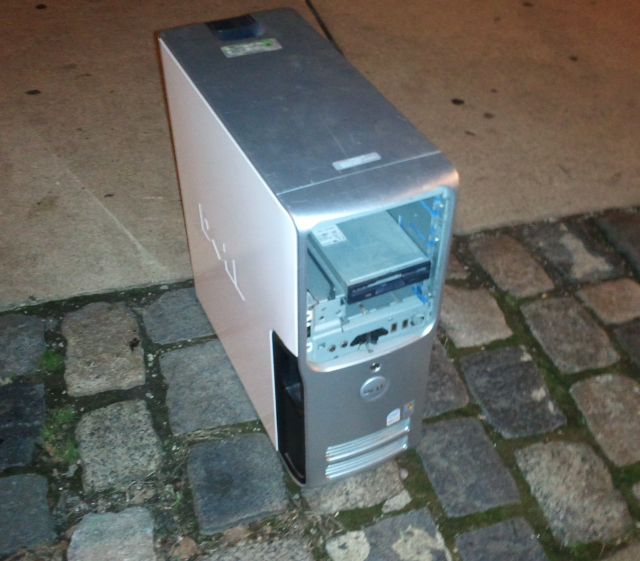While on one of my walks home through various parts of Philadelphia, I came across an old tower PC that had been put out on the curb for collection. The logo on the front identified it as an Intel VIIV-class computer, from sometime in the early 2000s. Like so many other PCs, it had probably become too old and slow for its owner to justify keeping it. (The modem card in the lowest slot confirms its identity as a technological dinosaur.) It’s clearly too old and slow to be of use.
Wait a minute, though. Looking up the specs for a VIIV-class computer, it’s amazing just what we are willing to throw out these days. This “old, obsolete” PC:
- …has a 64-bit, dual-core processor;
- …runs at a speed of at least 2.66GHz (I.E. 2.66 billion clock cycles per second);
- …may run at only 1/4 to 1/8 the speed of my current workstation’s CPU (a Core i7/920), but:
- …is about a hundred times faster than the 80486-33 that I built in 1991 (costing about $3000US at the time), and
- …is at least ten thousand times faster at floating-point calculations than the original IBM PC from the early 1980s.
Compared to the room-sized institutional computers of the late 1940s and early 1950s, this “obsolete” PC is so much faster that a straight comparison becomes difficult. It’s easily several million times faster at the few tasks that both machines would be capable of doing in similar fashion.
If this computer were somehow sent back to the early 90s, it would be not only greatly appreciated — it would probably be confiscated by the DoD, and certainly subject to export restrictions (there were restrictions on exporting 486-class computers, back in the day, due to fears they would be used for nuclear weapons modeling.) If it were sent back much farther than that, the best explanation would be witchcraft.
Where’s a DeLorean when you need one?


